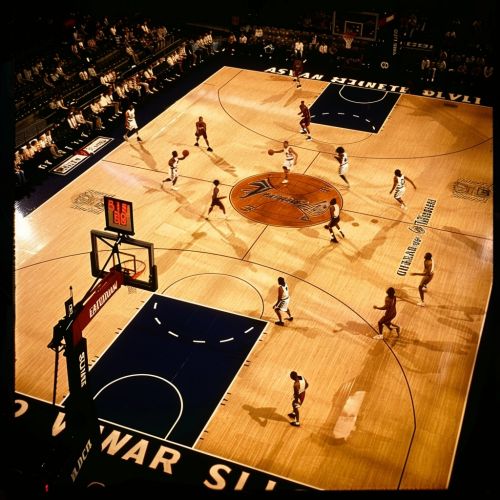Basketball Strategy
Overview
Basketball strategy involves a series of decisions and actions made by the players and coaches during the game to increase their chances of winning. The strategy can be divided into two main categories: offensive and defensive. The offensive strategy is focused on scoring points, while the defensive strategy is aimed at preventing the opponent from scoring. Both strategies require a deep understanding of the game's rules, player skills, and team dynamics.
Offensive Strategy
The offensive strategy in basketball is designed to create scoring opportunities for the team. This strategy can be broken down into several components: player positioning, ball movement, shot selection, and rebounding.
Player Positioning
Player positioning is a crucial aspect of the offensive strategy. The five players on the court must be positioned in a way that maximizes their scoring opportunities and minimizes the defensive pressure from the opponents. The typical player positions in basketball are point guard, shooting guard, small forward, power forward, and center. Each position has specific roles and responsibilities in the offensive strategy.
Ball Movement
Ball movement is another key component of the offensive strategy. The goal is to move the ball quickly and accurately among the players to create open shots. This can be achieved through passing, dribbling, and setting screens. Effective ball movement requires good communication, timing, and teamwork.
Shot Selection
Shot selection refers to the decision-making process involved in choosing when and where to shoot the ball. The goal is to take high-percentage shots that have a good chance of going into the basket. Factors that influence shot selection include the player's shooting skills, the defensive pressure, and the game situation.
Rebounding
Rebounding is the act of gaining possession of the ball after a missed shot. Offensive rebounding is a critical part of the offensive strategy because it gives the team another chance to score. Players must be aggressive and position themselves well to grab the rebounds.


Defensive Strategy
The defensive strategy in basketball is designed to prevent the opponent from scoring. This strategy can be divided into several components: player positioning, ball pressure, shot contesting, and rebounding.
Player Positioning
Just like in the offensive strategy, player positioning is a crucial aspect of the defensive strategy. The five players on the court must be positioned in a way that minimizes the opponent's scoring opportunities and maximizes the defensive pressure. The typical player positions in basketball have specific roles and responsibilities in the defensive strategy.
Ball Pressure
Ball pressure refers to the defensive tactic of applying pressure to the player with the ball. The goal is to disrupt the opponent's offensive flow and force turnovers. This can be achieved through man-to-man defense, zone defense, or a combination of both.
Shot Contesting
Shot contesting is the act of trying to block or alter the opponent's shot. The goal is to make it as difficult as possible for the opponent to score. Players must be agile and have good timing to effectively contest shots.
Rebounding
Defensive rebounding is just as important as offensive rebounding. It is the act of gaining possession of the ball after the opponent's missed shot. Players must be aggressive and position themselves well to grab the rebounds.
Team Strategy
In addition to individual player strategies, there are also team strategies in basketball. These strategies involve the collective actions and decisions of the entire team. They can be divided into two main categories: game plan and in-game adjustments.
Game Plan
The game plan is the team's overall strategy for the game. It is developed by the coaches and is based on the team's strengths and weaknesses, as well as the opponent's tendencies. The game plan includes offensive and defensive strategies, player rotations, and special plays.
In-Game Adjustments
In-game adjustments are changes to the game plan made during the game in response to the opponent's actions. These adjustments can be tactical (e.g., changing the defensive scheme) or personnel-related (e.g., substituting players). The ability to make effective in-game adjustments is a key skill for coaches.
Conclusion
Basketball strategy is a complex and dynamic aspect of the game. It involves a combination of individual player strategies and team strategies, all aimed at maximizing the team's chances of winning. Understanding and mastering these strategies can greatly enhance a player's or a team's performance on the court.
